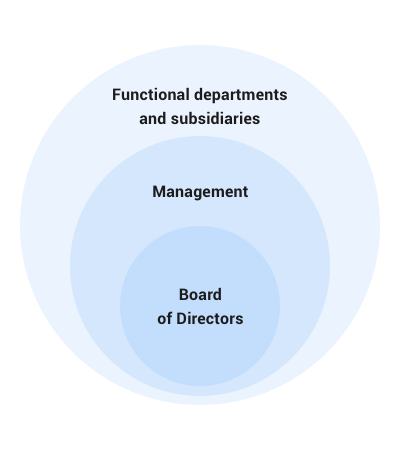- ENGLISH
| Dimension of Social Responsibility Concept | Relevant sustainable development goals |
|---|---|
| Customer Service |
|
| Staff Development |
|
| Environment Friendly |
|
| Community Obligations |
|
The Company incorporates the concept of social responsibility into all aspects of business management, establishes a social responsibility management framework, and continuously promotes the integration of social responsibility concept and our own business development, so as to put social responsibility into practice.

Based on the characteristics of actual business, management, and operation, the Company identifies key stakeholders including shareholders and investors, governments and regulators, employees, suppliers, customers, partners, communities, and the public. To ensure the information between the Company and various stakeholders can be timely and effectively communicated, the Company establishes and continuously improves the communication mechanism. In 2019, the key stakeholders identified and the key issues concerned by the Company are listed in the table below.
| Key stakeholders | Main communication channels | Main topics of concern |
|---|---|---|
| Shareholders and investors | Shareholders’ meeting corporate annual report, telephone,e-mail,network platform,reception of visitors,participation in investor meeting | Profitability business strategy Transparency of information disclosure |
| Government and regulators | Major meetings,policy consultation,event report,institutional investigation and official communication | Compliance operation Corporate governance Targeted poverty alleviation |
| Customer | Customer visit,satisfaction survey,customer complaint hotline | Service quality Privacy protection |
| Staff | Employee suggestion box, labor union,employee satisfaction survey,employee activities | Salary and benefits Development training Promotion Work environment |
| Supplier | Supplier inspection and communication meeting | Fair cooperation Performing the contract in good faith |
| Cooperative partner | Communication meeting | Fair cooperation Performing the contract in good faith common development |
| Community and public | Public welfare activities,community interaction,corporate recruitment and internship opportunities | Community relations Promoting employment Charity |
Through channels above, the Company communicates with key stakeholders effectively to understand their feedback on key issues on social responsibility. In addition, in 2019, the Company furtherly identified material issues to major stakeholders as the focus of corporate actions and reports. The Company’s materiality analysis of social responsibility is listed in the matrix below.

